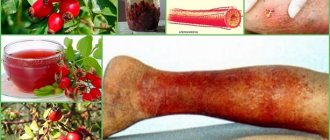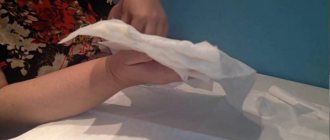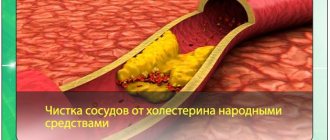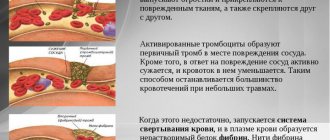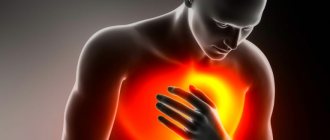Extrasystole is the most common type of rhythm disturbance, which can be observed not only in patients with cardiac pathology, but also in completely healthy people. The essence of this phenomenon comes down to the fact that some parts of the heart contract out of turn, which leads to the formation of arrhythmia. Most often, patients over 50 years of age suffer from extrasystole. Rhythm disturbances can intensify after physical and psycho-emotional stress, as well as after consuming alcohol- and caffeine-containing drinks.
The use of traditional medicine is an excellent way to treat extrasystoles, reducing the number of premature contractions and suppressing associated symptoms.
How to recognize the disease?
Extrasystole does not always have an obvious clinical picture. Its symptoms depend on the characteristics of the body and its general condition. In most people, this type of arrhythmia does not manifest itself in any way, it does not cause pain or discomfort and, as a rule, is an incidental finding during preventive electrocardiography. However, there are patients who tolerate arrhythmia very poorly. Video: Diagnosis of extrasystole using ECG data
Typically, extrasystole manifests itself in one of the following ways:
- Palpitations;
- Feeling as if the heart stops for a while;
- A feeling of short-term cardiac arrest, accompanied by a strong blow in the chest;
- Pulse disturbance.
Extrasystole may be accompanied by:
- Chest pain;
- Pallor of the skin;
- Anxiety;
- Shortness of breath;
- Excessive sweating;
- Sharp feeling of heat;
- Fatigue.
In fact, all of the above symptoms are nonspecific and can be observed in a number of other diseases, sometimes not even related to the pathology of the cardiovascular system. A reliable way to register extrasystole is an ECG, but even this method does not allow one to fully assess the extent of the disease, since it covers only a short period of time. In such cases, the doctor refers the patient to 24-hour Holter monitoring, with the help of which it is possible to record and analyze the electromechanical processes occurring in the myocardium during the day.
Extrasystole
The heart consists of two “pumps” (left and right ventricles) and “chambers” (atria) that store blood. In general, in most cases, atrial arrhythmias are less dangerous than ventricular arrhythmias.
- Types of extrasystoles
Extrasystole is the most common type of arrhythmia, in which there is untimely excitation and contraction of the heart muscle. Ecstasystoles are felt as interruptions in the functioning of the heart, as pauses and extra beats. Complaints about extrasystoles are even more frequent than complaints about increased pressure. Among the different types of extrasystoles, there are those that pose a threat to life and those that are relatively safe. It is difficult for the patient, and sometimes also for the doctor, to determine which arrhythmias are dangerous and which are not.
- Examinations for suspected extrasystole
A person who comes with complaints about interruptions in the work of the heart must tell in detail about his complaints and undergo an examination - electrocardiography and, in some cases, Holter ECG monitoring. These studies allow you to accurately determine the type of extrasystole.
- Atrial fibrillation and ventricular tachycardia
Atrial fibrillation is an extrasystole originating from the atria. This is the most common sustained arrhythmia and poses a certain risk. The second type is a rhythm disorder originating from the ventricles of the heart (ventricular tachycardia). An additional focus of electrical excitation appears inside the ventricles, like a certain group of military personnel, which “does not listen” to the “main” driver, but decides that it will act autonomously. This is how extraordinary heart contractions are triggered.
These arrhythmias are very different. The real danger is ventricular tachycardia when the focus inside the ventricle is powerful. It can be compared to the fact that there is no longer one group of military men, but a huge military unit with nuclear weapons that wants to achieve autonomy inside the left ventricle. Sustained ventricular tachycardia, which cannot be confused with anything on the ECG, is often accompanied by very poor health and fainting.
- Treatment of the most dangerous extrasystoles
Cases at high risk of sudden cardiac death
require special treatment in the form of installation of an electrical device - a cardioverter-defibrillator. That is, a person can “carry” a small defibrillator inside himself, which, if such an arrhythmia develops, will restore the rhythm by delivering an electric shock. At the Ilyinskaya Hospital we install such cardioverter-defibrillators for our patients.
Another treatment method used at the Ilyinskaya Hospital is radiofrequency ablation of the focus of the pathological rhythm. This is a minimally invasive endovascular surgery. Through a puncture in the femoral artery, a special catheter is inserted into the vascular bed and passed into the cavity of the heart. The surgeon determines the zone of the heart muscle in which the pathological source of excitation is located and destroys it with a high-frequency electric field.
- Treatment of non-life-threatening ventricular extrasystole
There are less dangerous arrhythmias, which also originate from the ventricles, but do not cause life-threatening tachycardia, however, the patient feels interruptions in the functioning of the heart and this significantly reduces the quality of his life. The situation is difficult, since drug therapy that eliminates arrhythmia does not prolong the patient’s life. The patient may be under the false impression that if there is no arrhythmia, then the risk of cardiac death is minimized. By removing one arrhythmia, an antiarrhythmic drug can cause another, more dangerous one. Therefore, the general approach to the treatment of ventricular extrasystoles that are not related to ventricular tachycardia is to try to find and eliminate the cause, if there is one. In particular, it may be myocardial ischemia.
If there is a focus inside the myocardium that causes arrhythmia, but the arrhythmia itself does not threaten death (although it interferes with life), then the patient must understand that medications will not add years to his life. Such patients should be recommended cardiac rehabilitation - various methods that will help improve the tolerance of this arrhythmia.
If a person is completely unable to live with arrhythmia, then he is prescribed antiarrhythmic drugs or undergoes radiofrequency ablation. It is important to understand that this is done to eliminate the subjective feeling of interruptions, and not to prolong life.
- Supraventricular extrasystole and its treatment
There is a much safer and more common type of arrhythmia - supraventricular extrasystole. Most often, this arrhythmia is not associated with any serious heart disease. Subjectively, supraventricular extrasystole can be felt by a person in the same way as ventricular extrasystole; it is almost impossible to distinguish them. Supraventricular extrasystoles originate from the atria and are quite safe, but they reduce the quality of life, since the anticipation of interruptions can be associated with the expectation of death. This is a special psycho-emotional state in which people begin to listen carefully to themselves. The phenomenon of somatosensory amplification appears, when a person becomes more sensitive and feels even those interruptions that a large number of healthy people have.
We do not have an ideal antiarrhythmic drug in our arsenal. With ventricular arrhythmia, we can talk about at least a zero balance of harm and benefit from prescribing medications. In the case of treating supraventricular arrhythmia, an antiarrhythmic drug can cause real harm to the heart. Therefore, the key method in treating such patients is psychotherapy. The psychotherapist’s task is to change the patient’s attitude towards the disease and explain to him that these interruptions are safe. In exceptional cases, when cognitive behavioral psychotherapy is not enough, an antiarrhythmic drug can be prescribed or radiofrequency ablation can be performed. But these are extreme measures.
- Alternative treatment for extrasystoles
If safe atrial extrasystole causes you serious anxiety and psychological discomfort, psychotherapy should be put first. Psychotherapists at the Ilyinskaya Hospital, in collaboration with cardiologists, will provide you with the necessary help.
If you have never been examined and do not know what type of arrhythmia you have, you need a high-quality examination with a daily ECG recording in order to exclude rare and dangerous rhythm disturbances, which can sometimes be observed against the background of ordinary extrasystole.
Treatment nuances
In many cases, when extrasystole is detected, specific therapeutic measures are not required, since its nature falls within the normal criteria and does not cause hemodynamic disturbances. If, after Holter monitoring, less than 1000 extrasystoles were recorded, then such a patient does not need treatment, but he is recommended to undergo a preventive examination once a year.
Specific antiarrhythmic treatment is required for patients who have recorded more than 1000 episodes of premature heart contraction. In such situations, serious pharmacological therapy is required, which will restore the heart rhythm and avoid deterioration of hemodynamic parameters.
Traditional remedies are recommended to be prescribed for non-dangerous forms of the disease that are not accompanied by a decrease in the quality of life and worsen the general well-being of the patient. For a dangerous type of extrasystole, alternative medicine can also be used, but only in combination with treatment prescribed by a doctor.
How do extrasystoles occur?
The main cause is an abnormal heart rhythm that occurs outside the sinus node. Extrasystoles can occur in both cardiac patients and healthy people, and often go unnoticed.
Most extrasystoles are harmless. However, they may be symptoms of heart disease. Therefore, if you experience any of the symptoms described below, you should always consult your doctor to rule out or diagnose heart disease.
Depending on the exact location of origin in the heart, they are classified as supraventricular extrasystoles (SVES), which are generated above the level of the ventricle, or ventricular extrasystoles (VES), which are generated in the ventricle.
Extrasystoles can occur in isolation, in pairs or in so-called “short bursts”.
Treatment of extrasystole with hawthorn
The intensity of the healing properties of this plant is a well-known fact. One can note the beneficial effect of taking hawthorn not only for heart pathologies, but also for a host of other diseases. There are two dosage forms most used for arrhythmias - decoction and tincture.
For patients, the second option is best suited since alcohol “pulls out” more healing elements than water. To prepare the tincture you need the following:
- Take 16 g of pre-dried berries and pour them with a glass of vodka or diluted alcohol;
- The tincture must be placed for at least 15 days in a cool place, protected from sunlight;
- Then all this needs to be filtered through a gauze mesh or several layers of bandage;
- Can be used for consumption.
You can also purchase ready-made hawthorn tincture at the pharmacy.
Since the medicinal tincture contains alcohol, which in high concentrations can cause rhythm disturbances, it must be taken in small doses, approximately 0.5 ml per day. The treatment course lasts no more than 7 days.
Extrasystole, its treatment with folk remedies
Extrasystole . we can say that this is the most common arrhythmia that is not familiar to us. Extrasystoles can occur in patients, but it is also quite possible for them to occur in practically healthy people. Most often, the cause is stress or possible overwork, under the influence of caffeine, alcohol and tobacco.
The statistical, normal norm for a completely healthy person can be considered up to 200 ventricular and 200 ventricular extrasystoles per day. But, for some completely healthy people there may be more extrasystoles - even possibly up to several tens of thousands per day. Extrasystoles, in themselves, are completely safe; they are sometimes called “cosmetic arrhythmias.”
Extrasystole is a fairly common occurrence in life, for modern society, which at the same time does not require any treatment at all. In order to make your general well-being better and at the same time speed up the process of normalizing your heart rhythm, you can use not only special pharmaceuticals, but also many popular recipes. I would like to note that in this case, old and proven traditional medicine is much better and more effective, since it is not capable of causing the development of possible side effects. There are some recipes for treating extrasystole with folk remedies.
You need to take two teaspoons of valerian roots. then fill them with 100 milliliters of water and leave on the fire for about 15 minutes. After which the broth needs to be strained and cooled, you can take 1 tablespoon, a tablespoon in the morning, at an offensive time, in the evening, and preferably before bed. The important thing is that it is advisable to take the decoction before meals.
When fighting extrasystole, the following recipe is also suitable: You need to take one tablespoon, a tablespoon of lemon balm. herbs, pour it with two and a half glasses of boiled water and leave to infuse. Afterwards, the resulting infusion must be filtered and taken half a glass in the morning, lunch and evening. The course of treatment for extrasystole with folk remedies takes about two to three months, after which you need to take a week's break and you can continue therapy. Another excellent remedy that can help is a composition of black radish with honey - it will help well against extrasystole. To do this, you need to take one to one, black radish juice and an even amount of honey, all this must be mixed thoroughly. We received the remedy, as we always do, we take a tablespoon in the morning, during lunch and, of course, in the evening. If you use one of the proposed folk recipes, then do not forget about the usual healthy lifestyle.
You need to pour 10g of dry hawthorn fruit. 100 ml of vodka or 40-proof alcohol, the resulting mixture must be infused for 10 days, then strained. The infusion can be taken 10 drops with water, 3 times a day and before meals. Remedies that were prepared from hawthorn increase coronary blood circulation, tone the heart muscle, eliminate arrhythmia and tachycardia, lower blood pressure, and reduce the excitability of the central nervous system.
Herbs also help very well, horsetail grass - 2 parts and knotweed grass - 3 parts, blood-red hawthorn flowers - 5 parts. Take a tablespoon from the prepared mixture and pour it all into one glass of boiling water, preferably in a thermos, and leave overnight. The resulting infusion must be strained, after which you can take 1/3 - 1/4 cup 3 - 4 times a day, it helps very well with rapid heartbeat, insomnia, and irritability.
We recommend visiting the “Diets” section of the website and choosing a diet to suit your taste, or sharing your weight loss experience on the forum “How to lose weight, diets, nutrition.
Melissa
With regular use of an aqueous infusion from this plant, it is possible to reduce the activity of pathological cardiac impulses, as well as reduce the total number of extrasystoles and the severity of other rhythm disturbances. To prepare the medicine, you need to take 25 g of pre-dried lemon balm, put it in a saucepan and pour 400 ml of boiling water. Cover the pan, wrap in a towel and cool slowly, about 3-5 hours. Filter and use for medicinal purposes. Representatives of the stronger sex need to be more careful when consuming lemon balm infusion, since this plant can negatively affect male strength.
Adonis decoction
Adonis is a beautiful flower that grows in the temperate climates of Asia and has been used as a remedy since ancient times. The plant contains high concentrations of natural cardiac glycosides that have an antiarrhythmic effect. Regular use of adonis decoctions can effectively eliminate extrasystole and other types of arrhythmia. In addition to alternative medicine, adonis is successfully used in pharmaceutical production.
To make a healing decoction, you should follow the following algorithm:
- Take a small saucepan, pour 2 glasses of water into it, turn it on the fire, and after it starts to boil, throw in 30 g of dried flower leaves.
- Stir over low heat for 3-4 minutes.
- Then you need to cover the pan with a lid, remove it from the burner, wrap it in a towel or rag, and then put it in a warm place for 4-5 hours.
- Strain through several layers of gauze and drink a glass twice a day.
Extrasystole of the heart
Today, many people suffer from various diseases related to the heart and blood vessels. Extrasystole is an arrhythmia that is accompanied by premature contractions of the heart. This disease is accompanied by various sensations:
- antiarrhythmic therapy;
- squeezing and strong heartbeats;
- cardiac arrest (occurs for a few seconds);
- sometimes shortness of breath.
Hawthorn is considered an excellent remedy that will help overcome this disease. What should be used to prepare the medicine? To treat extrasystole with folk remedies, you need to take the fruits of this plant, grind them (take one tablespoon), pour them into an enamel bowl, and pour all this with one glass of water (boiling water), cover it with a lid and put it on low heat. Next, you need to strain the broth and drink the liquid forty drops (each time increasing the dose to a teaspoon) before eating three times a day. The procedure should be repeated every day for a month.
Another effective recipe is the following:
- take dried hawthorn flowers and brew them like tea;
- You need to drink several glasses a day (you can add sugar).
You can also pour vodka over the blooming hawthorn (fill a full jar of flowers with vodka so that all the flowers are covered), infuse and drink one spoon several times a day.
Horsetail infusion
Infusions and decoctions of this remedy have long been familiar to lovers of traditional medicine as a powerful remedy that can strengthen and strengthen the heart muscle. An important point is the correct collection of horsetail. The maximum concentration of beneficial components is observed in the summer, so if you cut the plant at another time of the year, the horsetail will lose a significant part of its healing properties.
To prepare a water infusion, you need to take 4 cups of boiling water and add a tablespoon of dried horsetail to it. Then let stand in a cool, dark place for about 4 hours. In order for the product to work, it must be taken a tablespoon 5 times a day.
Long-term use of horsetail decoctions and infusions can negatively affect the urinary system. The use of the product is not recommended for persons suffering from chronic kidney disease.
Reviews
I am already 62 years old, so it is clear that my heart often fails. I sometimes encounter extrasystole. I saw a cardiologist, he prescribed a number of pills and even injections, but I’m afraid of them the most, so I immediately started looking for an alternative to this. A friend advised me to infuse valerian root and drink it several times a day, saying it is always good not only for the heart, but also for the blood vessels. I started treatment and within a month the illness began to leave me. Thank God, my heart has been behaving calmly for six months now, and sometimes I also drink this tincture for prevention.
Marina Alekseevna
This is not the first time I have encountered extrasystole. But I clearly know how to cure the disease. For me, the secret of treating an illness was revealed six months ago, when I read in a magazine about herbal medicine methods, and I also began to slowly use it. I drank cornflowers, calendula, and valerian, I alternated everything, and in principle, I no longer see the disease, I go to the cardiologist at least once a month, and every time he confirms the absence of the disease. I'm happy.
Arthur Mitin
Infusion of zyuznik herb
Zyuznik, or water horehound, is a herbaceous plant that grows in marshy areas. When properly prepared, it has a positive effect on the functioning of the cardiovascular system and eliminates palpitations caused by disorders of the thyroid gland. The recipe for making the infusion is very simple. You need to take 2 cups of boiled water and pour dried zuznik into the pan. Cool the infusion in a dark place, protected from contact with children. It is recommended to take the product 30 ml 3 times a day. The treatment course is 30 days. If desired, the course can be repeated after a couple of months.
Herbal treatment
It's no secret that herbs are the number one remedy in the treatment of various diseases. In this case, they are also actively used and overcome the disease. Which ones are considered the most effective, and is treatment of cardiac extrasystole with folk remedies really the best solution?
Many people drink valerian to overcome this disease, you can use the one that is sold ready-made in the pharmacy, but you can also prepare an excellent remedy yourself. So, to do this, take the root of the plant (about one tablespoon), then fill it with boiled water (1 tbsp.) and leave it overnight. You need to drink this remedy for about 2 months, 1/3 cup, and each time we reduce the dose until we reach a spoon. Then we take a break and after a while we repeat the manipulation again.
Zyuznik grass helps a lot. This is, in other words, nettles that grow in swamps. It effectively copes with various heart diseases and ailments associated with the thyroid gland. To prepare the medicine, you need to take dry herb, chop it and pour boiled hot water (a tablespoon of herb per 0.5 liter of water). Leave this for a couple of hours, strain and drink before meals for a month. After a while, it is advisable to repeat this procedure.
If you begin to experience symptoms of extrasystole, treatment with folk remedies would be an excellent choice. After all, you don’t have to overload your body with harmful pills, buy various expensive medications, but you can simply try herbal medicine.
One of the proven methods of herbal medicine is the use of cornflower tincture. To do this, take a teaspoon of the plant’s flowers, pour boiling water (about half a glass) and leave. It is recommended to drink this liquid on an empty stomach every day for 2-3 months.
Also, to avoid the disease and to treat it, drink calendula tincture. You can prepare it exactly the same way as cornflowers. You need to drink 3-4 times a day for about a month; if there are still signs of illness, then we extend the procedure for another month.
According to reviews, treatment of extrasystole with folk remedies is quite effective. It helps both for prevention and to cope with the disease once and for all. However, we should not forget that any treatment, even the most harmless means, must be accompanied by the recommendations of a doctor. For example, when we use different herbs, we should get tested for allergies, since there are varieties of plants that can cause rashes, etc. Therefore, consult a doctor and treat yourself at home for your health!
Cornflower infusion
Regular use of this drug can eliminate acute attacks of atrial and ventricular extrasystole. To prepare it, take a teaspoon of dried plant flowers, add a glass of boiled water and leave in a closed container. After this, the drink must be filtered and stored in a cool, dark place for a couple of days. Take the infusion 20 minutes before meals, 3 times a day. The therapeutic dose is about 100 ml.
Treatment of extrasystole with folk remedies - ventricular, supraventricular and cardiac
A single use of any remedy, even the most effective, will not be a sufficient measure to eliminate this disease.
Traditional recipes for the treatment of extrasystole
Extrasystole is not considered a life-threatening disease. However, it is directly related to the work of the myocardium - the heart muscle. Therefore, when treating it, you should be careful and not self-medicate. Before using any medications or folk remedies, consult your doctor!
The disease itself may differ in the nature of the so-called pathogen, that is, the source of the arrhythmia - a heart rhythm disorder (see the general article on how to treat cardiac arrhythmia at home separately). Therefore, treatment of ventricular extrasystole
may follow a separate program. On the other hand, they also distinguish emotional extrasystole, or, more simply, arrhythmia due to strong emotions that have arisen - about it, the question of whether it is considered a disease at all remains controversial.
Let's consider the most popular, sought-after and effective recipes for treating extrasystole with folk remedies
. And about the treatment of atrial fibrillation, read a separate article.
We treat with ordinary valerian
Everyone knows the calming effect of valerian, which is often used for excessive anxiety. With the help of valerian, such frequent
form of extrasystole, as emotional.
The recipe itself is extremely simple. Take 1 tablespoon of valerian root and pour a glass of boiled water. Then leave in a closed container for about half a day, and then strain the liquid.
Take the resulting infusion 1 tablespoon three times a day at any time.
Cornflower infusion against acute attacks
Cornflower infusion is a very effective remedy against acute attacks, the causes of which can be both cardiac and atrial
extrasystole. To prepare this infusion, take 1 teaspoon of blue cornflower, pour boiling water (about 200 ml), and then infuse in a closed container.
Strain the infusion and store in a cool, dark place. You need to drink it three times a day 10–15 minutes before meals. You should take about a quarter glass at a time. It is recommended to drink this infusion only on those days when you have attacks.
Calendula infusion against heart rhythm disorders
The main thing that distinguishes extrasystole is a violation of the heart rhythm, or arrhythmia. That is why treatment of cardiac extrasystole with folk remedies
can be very effective if you use natural ingredients that help the heart restore its normal rhythm.
To prepare the infusion, take 2 teaspoons of calendula and pour two glasses of boiling water. Then leave for an hour and strain. The infusion should be taken 4 times a day, half a glass. This is a very effective remedy for frequent arrhythmia.
Infusion of lumbago to improve heart activity
To prepare such an infusion, take 2 teaspoons of lumbago, pour a glass of boiled water (necessarily cold), and then leave for half a day. Strain the infusion and store it in a cool, dark place.
You should take the product 3 times a day, one-third of a glass. It is recommended to drink the infusion before meals. It has been proven that it helps greatly when supraventricular extrasystole of the heart
.
Horsetail infusion - a remedy against heart weakness
One of the common causes of extrasystole is weakness of the heart muscle. To help her train and thereby eliminate unpleasant symptoms, you can use horsetail infusion. To prepare it, take 1 tablespoon of horsetail and pour 3 cups of boiling water. Then leave for 3 hours in a closed container.
Strain the infusion and take 1 tablespoon 5-6 times every day to help the heart muscle become more trained. Do not combine taking this infusion with smoking or energy drinks. And remember that you also need to train your heart muscle through physical exercise - infusion alone will not help you with this. Functional
extrasystole is a consequence of a general lack of training of the body.
Alcohol tincture of hawthorn is an effective tonic
This tincture can only be taken by those who do not have an intolerance to ethyl alcohol (alcohol). To prepare the tincture, take hawthorn fruits and add vodka or 40 percent alcohol (at the rate of 10 g of fruit per 100 g of alcohol or vodka)
Leave for 10 days and then strain the tincture. You need to take it 3 times a day before meals, 10 drops each time. This tincture lowers blood pressure and excessive excitability of the central nervous system, helps cope with heart rhythm disturbances, tones the heart and improves blood flow.
Therefore, hawthorn tincture is considered one of the best options for treating extrasystole with folk remedies.
.
However, remember: this is a medicinal product, not an alcoholic drink, and abuse of such a tincture can lead not to improvement, but to deterioration of the body’s condition.
Recipe against extrasystole based on honey
To prepare a very effective mixture according to a folk recipe, take fresh radish juice and honey in a ratio of approximately 1 to 1. Mix them thoroughly and store the resulting mixture in any cool place in a closed container.
Take the mixture 2-3 times a day, 1 tablespoon. This is great for improving heart stability. However, you should not use this recipe if you are intolerant to honey or allergic to honey.
Video: Treatment of extrasystole with Malysheva
Calendula infusion
A special feature of calendula medicines is that they affect not only the heart muscle, but also the arterial vessels. The positive effect of taking it is associated with the high content of microelements (Ca, Mg, Na) involved in the processes of repolarization and depolarization during the excitation of cardiomyocytes. To prepare this medicine yourself, you need to take about 30 g of dried calendula flowers, put them in a saucepan and pour 2 cups of boiling water over them. Close the pans and let the infusion cool to room temperature. After about an hour, the product must be filtered through several layers of gauze.
Calendula infusion will not be able to remove the permanent form of arrhythmia, but it will be very effective in exacerbating extrasystole. If you feel the appearance of extrasystoles, it is recommended to take 100 ml every couple of hours.

